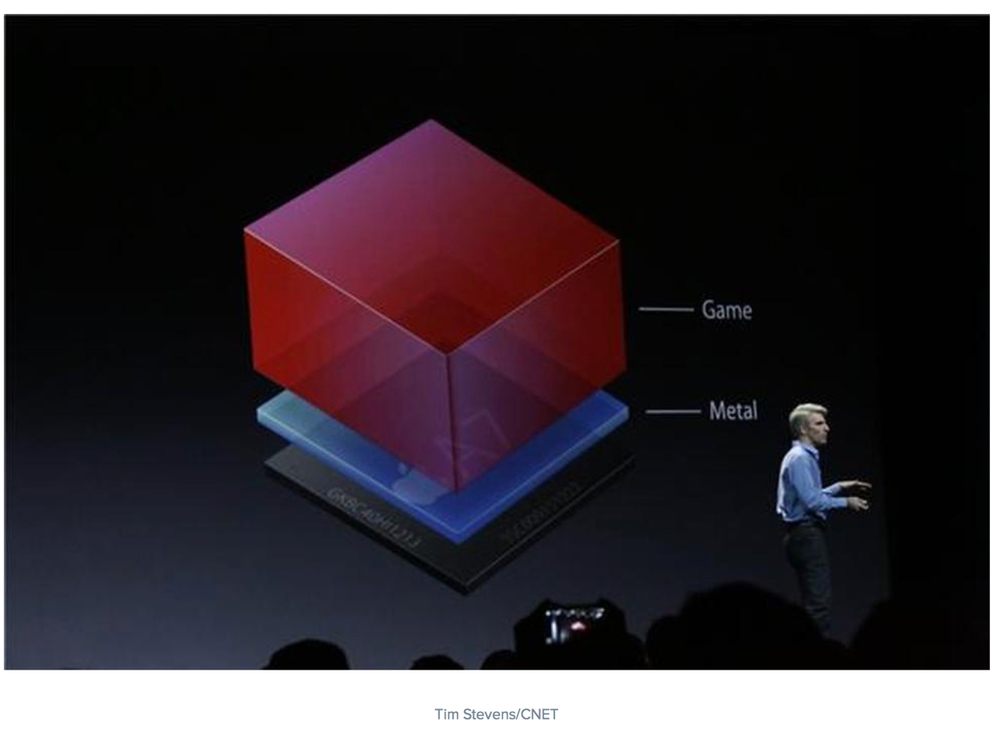Apple has always — or so it seems — treated gaming as an afterthought on the Mac. It’s time for that to change.
The worldwide PC market registered one of its lowest quarterly growth rates in the first quarter 2016, but Gartner, Inc. says several profit opportunities exist for PC [personal computer, not just Windows systems] vendors. One of those is gaming.
“PCs are no longer the first or only devices users are choosing for Internet access,” says Meike Escherich, principal research analyst at Gartner. “Over the last five years, global shipments of traditional PCs (desktops and notebooks) have fallen from 343 million units in 2012 to an estimated 232 million units in 2016. In terms of revenue, the global PC market has contracted from $219 million in 2012 to an expected $137 million in 2016.”

Nevertheless, PCs are still able to deliver in areas that smartphones and tablets cannot, with larger screens, ergonomic keyboards, greater storage and more powerful computer processors,” adds Tracy Tsai, research vice president at Gartner. The high-end, purpose-built gaming PC segment (for example, $1,000 or more) is where PC vendors should focus for long-term profitability, despite this segment’s competitiveness, she adds.
While the gaming PC market is a very small market with only a few million units sold a year, the average sales price [ASP] of a gaming PC is significantly higher than that of a nongaming PC. ASPs range from $850 for an entry-level gaming PC notebook to $1,500 for a premium model. Those prices are in Apple’s wheelhouse.
Big name games are coming to Mac more quickly, new indie games tend to hit Mac at the same time, and Mac hardware is looking better and better for gaming. He’s right, of course, but I’d love to see Apple make moves to improve gaming on our favorite computing platform. Here are suggestions I’ve mentioned before:
Offer an Apple joystick/gamepad — or at least the “hooks” so third parties could make ’em. This would require an OS X upgrade. This probably won’t happen, but but I know some users are tired of having to jump through a lot of software configuration hoops to play Mac games using a joystick/gamepad rather than the keyboard and mouse.
Really push Metal for Mac OS X. Introduced at the 2014Apple Worldwide Developer Conference, Metal is a core graphics technology that gives apps near-direct access to the GPU [graphics processing unit]. This means faster and more efficient rendering performance across the system.

Metal bypasses the OpenGL framework — which on OS X is slooow, dragging high-end Mac apps and games down in comparison to their Windows counterparts.
Brianna Wu, head of development at Giant Spacekat, says that Metal for OS X has great potential for “active gamers.” “All the major game engines are committed to working with Metal,” she says. “This includes both Unity and companies with proprietary engines like Blizzard and 2K.”
That sounds great. Apple must ensure that Metal doesn’t lose its momentum.
Look into the The GameDock (based on a concept first developed by Mac/Life a few years ago), which was based on the success of the iPhone/iPad/iPod touch as a gaming platform: “Take this nifty little gaming platform and assign it double duty as both a handheld and a console system. The GameDock [pictured — in mock-up form] accommodates the iPhone and iPod touch and hooks directly to your TV and the Internet. Whether you download a game wirelessly via the handheld or wiredly via the GameDock, you pay just once for two versions of the same title.
“This is where things get interesting. When you download a game straight to your handheld, you can immediately begin playing the touch-controlled version of the game. And it’s glorious! And the next time you seat your handheld in the GameDock, the console immediately sucks down the full, expanded version of the game from the App Store, and stores it in its voluminous hard drive.
“So now you can play the console version of the very same game — with more features, more content, expanded controls, and, thanks to the GameDock’s integrated graphics processor, better visuals.
“And should you first download a game when your handheld is seated in the GameDock, the ‘mini’ version of the game shoots straight into your iPhone or touch, ready to play the next time you disengage from the console and hit the road.
“Of course, the GameDock scheme wouldn’t be quite so interesting if not for its seamless integration of content. For some game titles, the handheld version of the game exists as sort of an autonomous ‘mini game’ — its gameplay model runs independent of the console version’s. But for other titles, the handheld and console versions of the same game work together. Gameplay models obviously differ between the mobile and full versions, but each version hooks into the other in creative, novel, symbiotic ways. And through the power of syncing, your progress in level- and achievement-based games is saved and always propelled forward, regardless of which version you’re playing.”

However, what if Apple used the GameDock as a way to sell more Macs by offering gaming options that tie in with the iPhone, iPad and iPod touch as well as the Apple TV? This could turn the Mac into a Wii-like computer gaming system.
Instead of connecting to a TV, the GameDock would connect to a Mac (and perhaps be built into iMacs), allowing Apple computers to run the “bigger” versions of the “mini” games on the iPhone, iPad, and iPod touch that Mac|Life suggested. The GameDock would also allow multi-touch, accelerometer-equipped game controls to be used with the Mac games.
CleanMyMac Classic – the original Mac cleaning software
